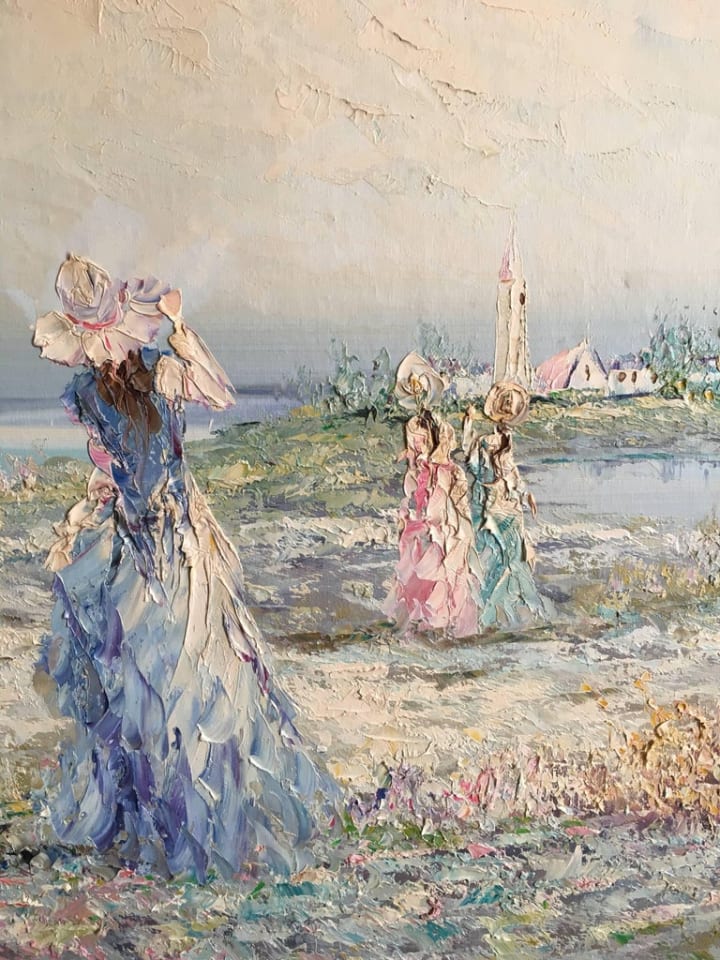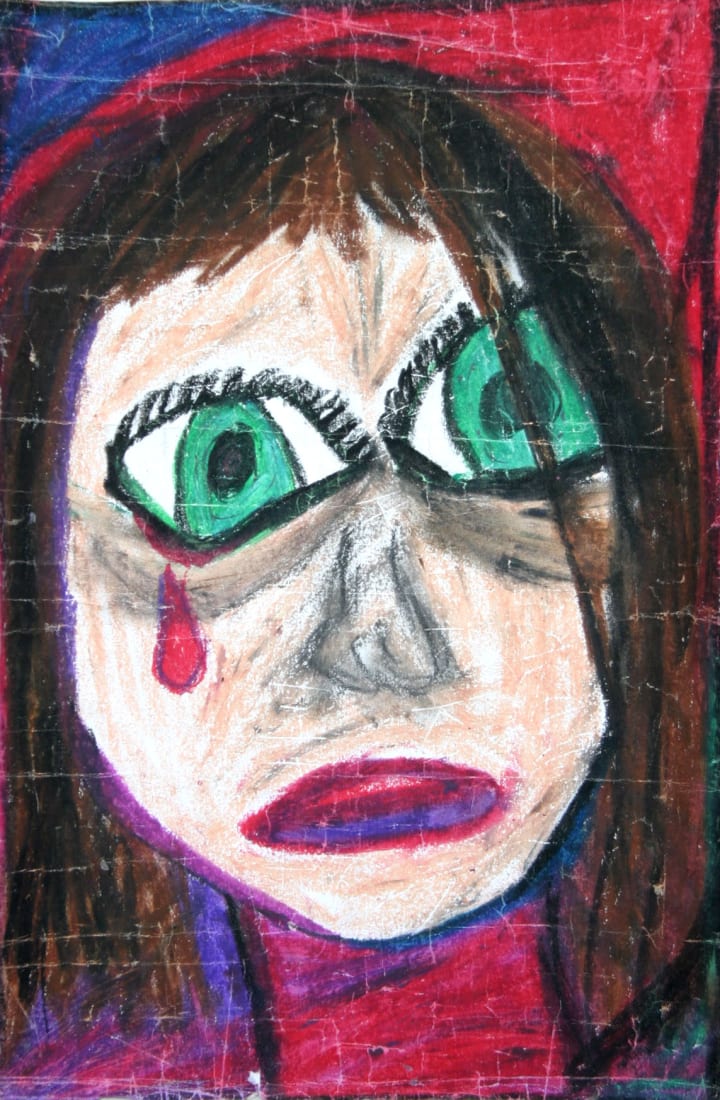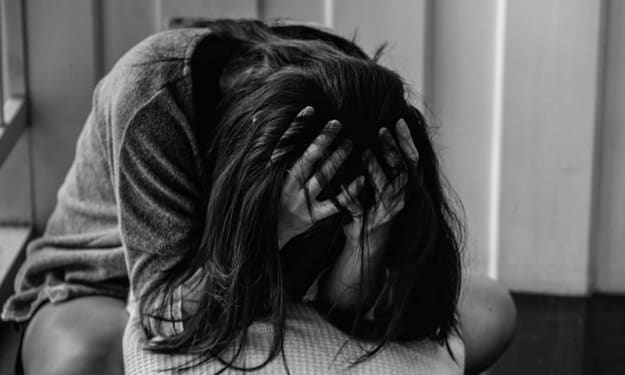Art is a Good Medium for Expression
the aesthetic experience, or artistic activity

Tolstoy (1828-1910) stresses that art express worthy feelings. Art as emotional expression finds great exposition from the work of Benedetto Croce (1866-1952) and R.G. Collingwood (1889-1943). Croce, starts, "intuitions", the immediate knowing of impressions and transformation by active imaginative unified images or organic wholes. Intuition is regarded as expression of emotion to express the personality of the artist and evoked to the “larger soul of man” Holcombe,2015).

Croce postulates only intuition-expression is art, thereby externalization is the practical matter in the communication of art, then the audience can use it to recreate the original artistic experience. Whereas, Collingwood portraits art as the originating experience. "The aesthetic experience, or artistic activity, is the experience of expressing one's emotions; and that which expresses them is the total imaginative activity called indifferently language or art."(Holcombe, 2015).
Collingwood omits the use of private languages to move philosophy from private mental actions to observable human activities in explanation of why art is important. While, Dewey’s expression offers meaning to the “experience” as "a shared social activity of symbolically-mediated behavior that seeks discovery of possibilities of our objective conditions in the natural world for meaningful, intelligent and fulfilling ends." (Holcombe, 2015).

My thoughts, as a psychologist, offer art raises emotions that are intense and have justifiable form, and these emotions are at times painful. Art therapy has many positive affects for most people, with art being one of the oldest forms of expression and communication. Not only can the art process in therapy be therapeutic, but the interpretation and understanding of the patient’s feelings and emotions of what they have created can enhance their well-being. Art is a medium that can employ abstract elements of form, colour, and composition that appeal to our sensory equipment, either by experience or inherit physiological. We adopt certain attitudes with art of openness, sensitivity, and a willingness of imagination that can be transferred from experience. Art expression embraces constituents of imagery, decreased defenses, objectification, permanence, spatial matrix, and creative and physical energy (Art Therapy, 2019).

Holcombe, (2015) offers, perhaps art is not an expression of emotion, but a representation of the emotion. Therefore, present in the artist mind only but conveyed in the medium, thus, art cannot escape being representational. The field of artistic expression offers art has its own meaning. Our simplest observations can transform an array of sensations into a virtual world of universal symbols: a world of its own grammar, guide our senses, and be articulated by art.
Holcombe, (2015) proposes music has its own logic which makes known a symbolic expression about feelings. Feelings that demonstrate symbolic objectification in certain forms of truth and detail when language cannot be approached. Langer argument artists extract the significance from experience, and uses the form to create the object which directly expresses the meaning. Langer’s philosophy of feelings and creativity are a central position that occupy the work of many contemporary psychologists (Holcombe, 2015).

Stuckey and Nobel, (2010) explores the relationship between creative arts and health outcomes, particularly, health effects of music engagement, visual arts therapy, movement-based creative expression, and expressive writing. There is proven evidence that art intervention reduces adverse physiological and psychological outcomes. Music is a medium of art that emphasizes healing with a soothing capacity of music and its ability to offset overly technological methods in healthcare. Furthermore, music therapy shows a decrease in anxiety, and can help to restore emotional balance. Stuckey and Nobel, (2010) offer art helps people express experiences that are too difficult to put into words, in cases of diagnosis of cancer. Cancer patients explore the meanings of past, present, and future during art therapy, thereby integrating cancer as part of their life story that gives it meaning.

Artistic self-expression contributes to the maintenance or reconstructing a positive identity. Whereby ongoing cancer-related difficulties of fear for the future, pain, lack of sleep, role loss, activity restriction, reduced self-confidence, and changes to social relationships can participate in visual art (textiles, card making, collage, pottery, water colour, acrylics) to help focus on positive life experiences, and relieve the ongoing apprehension of cancer. It can enhance a person’s self-worth and identity that allow opportunities to demonstrate continuity, challenge, and accomplishment. Art intervention can also maintain a social identity resistant of being defined by cancer. Art as a medium helps a person to express their feelings in a symbolic manner, especially during treatment (Stuckey & Nobel, 2010).

Chronic stress and depression are onset by heart disease patients, visual arts programs conclude; drawing can help how patients visualize their condition with an insightful approach to explore understandings of the illness. This creative activity potentially contributes towards reducing stress and depression to serve as a vehicle to alleviate the burden of chronic disease.
My views, like Stuckey & Nobel, (2010), offer art is a refuge from the intense emotions related to illness and has no limits to the imagination, thus, it gives a creative way to express grief. As example, moulding clay, is a powerful way to help people express their feelings by physical engagement at a somatic level. Moreover, this facilitates verbalization through communications that uses unconscious symbols rather than primary processing that cannot be expressed by words (Stuckey & Nobel, 2010).

Wagner, (2015) offers art awakens the senses that opens the heart and mind to possibilities, that fuels the imagination. For children art is a process of learning where we can create ourselves and experience the world in innovative ways. Art creativity can give us the bigger picture view of life, beauty, symbols, spirituality and storytelling to keep the magic alive and in the present. Art is a medium to support emotional intelligence and expression of complex feelings. Children can feel better about themselves, and it helps them to understand others by seeing what they have created and expressed.

In sum, art therapy is practiced in an array of settings to include hospitals, psychiatrics, rehabilitation facilities, wellness centres, forensic institutions and schools, crisis centres and the wider communities of private practice and clinical settings. Art is a good medium that supports personal meaning in one’s life, that can help to discover joy of one’s self or surprise and elicitation of others. Wagner, (2015) portrays art to generate a love of learning & creativity that develops a willingness to explore what has not existed before. Feeling and ideas can be externalized in object, allowing the client to separate feelings and recognize their existence. The art therapist should possess excellent communication skills with qualities to include compassion and good listening skills, but the primary goal of the therapist is to allow the client to do as much art creativity as they can for them to get insight from their creative expression in a non-threatening manner (Art Therapy, 2019).

References
Art Therapy, (2019). The Basic concepts of Art Therapy
Art Therapy, (2019). How Art Is Practiced?
Wagner, M., L. (2018). Drawing on Earth. Retrieved from http://www.drawingonearth.org/resources/10-reasons-why/
Holcombe, J. (2015). Art as Emotive Expression. Retrieved from http://www.textetc.com/theory/emotive-expression.html
Philosophy of Art, Art as Expression; Tolstoy. Retrieved from http://www2.hawaii.edu/~freeman/courses/phil330/21.%20Art%20as%20Expression.pdf
Stuckey, H. L & Nobel, J. (2010), The Connection Between Art, Healing, and Public Health: A Review of Current Literature, 100(2): 254–263. doi: 10.2105/AJPH.2008.156497
About the Creator
Shanie Walker
Shanie Walker is a Holistic Behavioural Therapist, awards, and honours in Art Therapy, Dialectic and CBT. Shanie is a Psychologist and Registered Professional Hypnotherapist. Accredited Nutritionist, and Master Degree in Fitness.






Comments
There are no comments for this story
Be the first to respond and start the conversation.